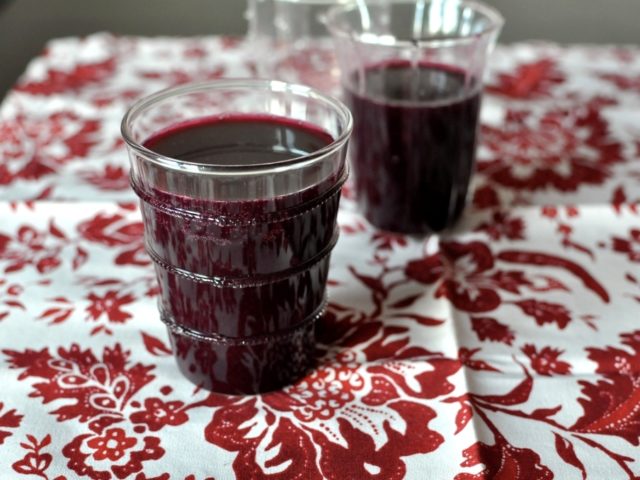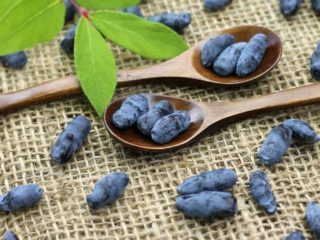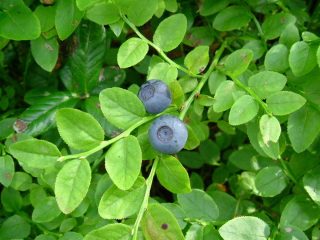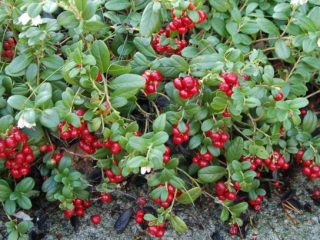Content
Many women are afraid to use honeysuckle while breastfeeding. The main fear concerns the high likelihood of developing an allergic reaction in a child. But in fact, the berry is not prohibited during breastfeeding. It contains a lot of nutrients that a child needs for full development.
Is it possible to breastfeed honeysuckle
Honeysuckle is a deep purple berry that grows on a shrub of the Honeysuckle family. It has a pronounced sweet and sour taste. The berry is not considered a traditional remedy. In addition, it does not contain substances hazardous to the human body. Therefore, honeysuckle is not prohibited for women who practice breastfeeding. But its introduction into the diet differs in a number of nuances that are extremely important to take into account.
Fruits of only a certain variety are suitable for consumption, since there are also poisonous varieties. The characteristic feature of edible honeysuckle is its bright color and light whitish bloom. The red and orange varieties should be avoided as they are inedible. If you eat poisonous fruits, toxic poisoning will develop. It is dangerous for the life of the woman and her child.

To neutralize the sour taste of the berry, you need to lightly sprinkle it with sugar.
The benefits and harms of honeysuckle with hepatitis B
Honeysuckle is one of the main sources of vitamins and minerals. Its undoubted advantages over other berries and fruits are early ripening and frost resistance. She is completely ready for collection at the beginning of June. During the period of breastfeeding, it can be not only beneficial, but also harmful. Due to the pronounced diuretic effect, the fruits can provoke significant discomfort.
Before eating honeysuckle for breastfeeding, you should study its composition. It contains pectins that have a stimulating effect on the intestines. The abundant content of ascorbic acid helps to strengthen the immune system, which is especially important during epidemics of flu and colds. Minerals and vitamins make milk more nutritious, which is beneficial for baby's health. The iodine present in the composition of the product ensures the full functioning of the endocrine system, which has an indirect effect on the process of milk production. At the same time, the product helps to stabilize the emotional state and restore the sleep of the new mother. The most significant benefits of honeysuckle during breastfeeding include:
- assistance in the formation of the child's musculoskeletal system;
- replenishment of the level of iron in the body;
- normalization of the emotional state of a woman and her child;
- strengthening the immune system;
- cleansing the body of a nursing woman from toxins;
- antibacterial and anti-inflammatory effect;
- aid in weight loss after childbirth.
Since honeysuckle contains a lot of vitamins and minerals, it helps to cope faster with postpartum problems. The most common of these are hair loss and brittle nails. Regular consumption of berries allows you to maintain the vitamin and mineral reserve at the required level.In addition, the product helps to normalize metabolism and put hormones in order. It relieves headaches and improves performance, is useful for high blood pressure.
Despite the variety of benefits, nursing women should exercise caution when using honeysuckle. It can act as an allergen that can provoke a negative reaction in a child in the form of a rash. Excessive amounts of honeysuckle are also undesirable if a woman has kidney problems. Due to the diuretic effect, the symptoms of the disease may become more pronounced. With an exacerbation of chronic gastrointestinal ailments, purple fruits worsen well-being, causing abdominal pain. Sometimes, eating honeysuckle while breastfeeding can negatively affect your baby's stool.

It is advisable to dilute the juice from honeysuckle with water before taking
How to eat honeysuckle for a nursing mother
While breastfeeding, the woman is allowed to eat a small bunch of honeysuckle daily. It is advisable to introduce it into the diet in small portions. But doctors do not recommend doing this earlier than 3-4 months after childbirth. In the first months, it is advisable to completely abandon potential allergens.
The most optimal form of the product is in the form of compote or fruit drink. It is strictly forbidden to drink more than 3 tbsp. drink a day. It is undesirable to cool the juice before use. It should be at room temperature.
You can also use dried and frozen berries. The amount of useful components during heat treatment changes slightly. Such a product can be bought ready-made in any supermarket or prepared by yourself. The best time to dry and freeze berries is in early autumn. The permissible daily dosage is 50 g. In the autumn-winter period, berries should be eaten to prevent colds.
Honeysuckle jam when breastfeeding can be used as a substitute for desserts with a less healthy composition. It is added to cereals and used as a filling for baked goods. This variation is especially relevant in winter, when there is no way to purchase the product fresh. When using jam, you must also remember about its high calorie content due to the sugar content.
Contraindications and precautions
When breastfeeding, a woman should be more responsible about the presence of contraindications to honeysuckle. This will prevent unwanted consequences for both the child and the mother herself. Contraindications include:
- diseases of the kidneys and biliary tract;
- low blood pressure;
- allergic reaction;
- upset digestion.
When using honeysuckle while breastfeeding, you need to remember the need to comply with the dosage. Even the most beneficial remedy can be harmful to health if consumed excessively. It is equally important to monitor how the baby reacts to the introduction of a new product into the diet. It is advisable to eat 2-3 fruits and follow the child. If after 2-3 hours negative symptoms do not appear, you can increase the daily dosage. In most cases, the berry is well tolerated without causing side effects.
Conclusion
Breastfeeding honeysuckle can be a great way to boost your immune system and enrich your breast milk. To get the most out of it, you need to take into account even the smallest nuances. If side effects occur, you should stop eating the product.








